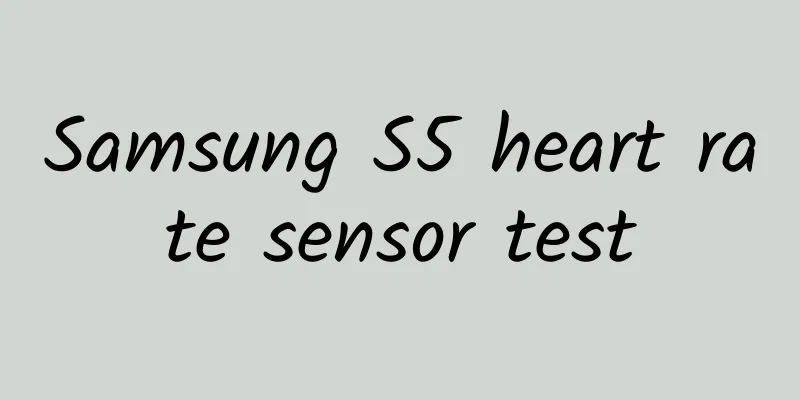Li Guoqi from the Chinese Academy of Sciences: An article sorting out the past and present of brain-like computing

|
Source: Zhiyuan Community Introduction: As we all know, human brain activity is a complex and continuous dynamic process, and its complexity far exceeds the upper limit that can be simulated by current computing resources. The brain has about 100 billion neurons, 100 trillion synapses, and the average length of synaptic connections is about 10-1000 microns. Assuming that each 1-micron connection is approximated by a differential equation, it is roughly estimated that the human brain has about 100 trillion to 100 trillion parameters (this parameter may be underestimated). The core of brain-like computing is to draw on the information processing mode or structure of the biological nervous system, and then construct corresponding computing theories, chip architectures, application models and algorithms. Brain-like computing is considered to be one of the most important development directions in the post-Moore era, and may become a breakthrough in future intelligent computing. At the 16th Qingyuan Talk event of the Zhiyuan Research Institute, Li Guoqi, a researcher at the Institute of Automation of the Chinese Academy of Sciences, gave a report titled "Research Progress and Prospects of Brain-like Computing". Li Guoqi first introduced the basic concepts of brain-like computing, and then introduced the latest research progress of brain-like computing systems from multiple aspects such as model algorithms, software, chips, and data of brain-like computing systems. Finally, he summarized and prospected the development trend of brain-like computing systems. About the author: Li Guoqi, researcher at the Institute of Automation, Chinese Academy of Sciences, doctoral supervisor, and young scientist at Beijing Zhiyuan Artificial Intelligence Research Institute. Li Guoqi has published more than 150 papers in journals such as Nature, Nature Communications, Proceedings of the IEEE, IEEE TPAMI, and conferences such as ICLR, NeurIPS, AAAI, and CVPR; published an early academic monograph in the field of brain-like computing in China; and his papers have been cited more than 4,500 times on Google Scholar. In 2017, he was selected as an outstanding young talent of the Beijing Natural Science Foundation, and in 2018, he won the first prize of science and technology of the Chinese Command and Control Society. In 2019, he was selected as a "Zhiyuan Scholar" of Beijing Zhiyuan Artificial Intelligence Research Institute, and in 2021, he won the second prize of Fujian Science and Technology Progress, and in 2021, he received funding from the Beijing Outstanding Youth Fund, and in 2022, he was selected into the "Hundred Talents Program" of the Chinese Academy of Sciences; his work on brain-like chip theory, architecture, and tool chain was selected as one of the top ten scientific advances in China in 2019 and the top ten advances in artificial intelligence in the world in 2020. Compiled by: Wang Guanghua Editor: Li Mengjia 01 What is brain-inspired computing? Brain-like computing is an emerging research field that has emerged in recent years. Similar to fields such as artificial intelligence and machine learning, it is difficult to define it accurately. Currently, there is no universally recognized definition of the concept of brain-like computing in the industry. Li Guoqi pointed out that the descriptive definition of brain-like computing is "a general term for technologies that are inspired by the way the human brain processes information and aim to build information systems with more general artificial intelligence and efficient intelligent edge/cloud ends." Brain-like computing hopes to integrate knowledge from disciplines such as brain science, computational neuroscience, cognitive science, and even statistical physics to solve some problems of existing traditional computing technologies, and then build a more general, efficient, and intelligent novel information system. In a narrow sense, brain-like computing refers to neuromorphic computing, which mainly involves the development of neuromorphic chips to support spiking neural networks (SNN) derived from computational neuroscience; in a broad sense, brain-like computing also includes in-memory computing, memristor chips, and even the development of AI chips to support traditional artificial neural networks (ANN). Therefore, the research and development of brain-like computing, like artificial intelligence, also needs to be coordinated from various directions such as model algorithms, software, chips, and data. 02 Brain-like computing models: Breaking the gap between neuroscience and AI Currently, there is a huge gap between neuroscience and artificial intelligence. Neuroscience focuses on reconstructing the fine structure and physiological details inside the brain, while artificial intelligence focuses on achieving efficient computing through mathematical abstraction of neural structures. Therefore, how to cross-integrate artificial intelligence and neuroscience has become a daunting challenge. In brain-like computing, spiking neural networks have both biological rationality and computational efficiency, and may provide a new paradigm for artificial intelligence. Simply put, SNN = ANN + Neuronal Dynamics. How to find a spiking neuron model that has both biological rationality and computational efficiency, and how to establish the relationship between the spiking neuron model and AI tasks are core issues in the field of brain-like computing. At present, SNN generally uses LIF neurons as the basic unit for building neural networks. The reason is that LIF neurons are a typical comprehensive model that has the simplicity and ease of use of IF models and can simulate the rich physiological characteristics of biological neurons like HH neuron models. As we all know, ANN and SNN have their own characteristics and strengths. ANN can make full use of the computing characteristics of existing computers, represent information with neuron states, transmit information in the spatial domain, and its main operation is dense matrix-vector multiplication. In contrast, SNN uses pulse sequences to represent information, transmits information in both spatial and temporal domains, and its main operation is event-driven sparse addition, which has both computational efficiency and biological credibility. 03 Brain-like learning algorithms Compared with ANN training, efficient SNN training faces many problems and challenges, such as the complex spatiotemporal dynamics of spiking neurons, the non-differentiability of the pulse information transmitted between spiking neurons, pulse degradation, and loss of training accuracy. Currently, SNN training methods mainly include unsupervised learning, indirect supervised learning, and direct supervised learning. These training methods attempt to solve the above problems and challenges from different perspectives. 1. Unsupervised learning based on STDP Spike Timing Dependent Plasticity (STDP) is a typical unsupervised learning method that can control the update of weight connections between brain neurons. In layman's terms, the closer the firing time of two neurons, the tighter the binding relationship between them. As shown in the figure above, when two neurons are activated one after another, the two with a close chronological relationship will strengthen the connection, while the two with an opposite relationship will weaken the connection, so neurons often establish a one-way strengthening connection. If two neurons are activated at the same time, they form a closer connection with the common downstream neuron, so that the two are neurons of the same level and have an indirect relationship with each other. For example, the learning model composed of the STDP rule combined with Winner-Take-All (WTA) is a simple and effective unsupervised learning method. Specifically, the image is converted into a pulse sequence in the input layer (the pulse firing rate is proportional to the pixel value), the neurons are forward connected in a fully connected form, accept excitatory inputs, and are updated using the STDP rule. They are backward connected one-to-one with inhibitory neurons to produce lateral inhibition (i.e., soft WTA) and balance the pulse firing rate through an adaptive threshold. The STDP model learns by adjusting local rules, which makes it easy to implement distributed models on neuromorphic chips and has online learning capabilities. However, local synaptic plasticity is not enough to explain how changes in individual synapses coordinate the realization of the overall goals of the nervous system. At the same time, Li Guoqi also pointed out that this unsupervised learning training method has problems such as difficulty in obtaining high-performance networks and cannot be used in large-scale deep neural networks. 2. Indirect supervised learning based on ANN to SNN The ANN-converted SNN method refers to training an ANN model and then migrating the ANN weights after learning to an SNN with the same structure. The basic idea is to use the average pulse firing rate of the SNN to approximate the ReLU activation value in the ANN. Therefore, the ANN-converted SNN method has a tradeoff problem between model accuracy and model simulation step size T. This method uses supervised signals to perform gradient back propagation training in the original ANN model and then converts it into an SNN model, so it is an indirect supervised learning. The ANN-converted SNN method is highly scalable and can easily convert newly emerging or large-scale ANN network structures into corresponding SNN versions. Generally speaking, the larger the simulation time step T, the closer the average pulse firing rate of the SNN is to the activation value in the ANN, and the smaller the error between the two models, thereby achieving almost "lossless" conversion of ANN-SNN. However, too long a time step T will lead to a decrease in training and reasoning efficiency, and the power consumption advantage of SNN will also be reduced. In addition, Li Guoqi pointed out that since this method essentially uses SNN to approximate ANN, the available time-dependent signals in SNN will be lost during the conversion process, which may cause its application scenarios to be relatively limited. 3. Development of SNN Direct Supervised Learning In order to avoid the limitations of the above two training methods and solve the problem that SNN cannot be effectively trained, Li Guoqi and his team proposed SNN direct training methods such as STBP (Spatio-Temporal Backpropagation) earlier. The difficulty of direct training algorithm lies in the complex spatiotemporal dynamic characteristics of SNN and the problem of non-differentiable pulse emission. The solution proposed by Li Guoqi's team is to convert the differential equation form of pulse neurons into a difference equation form that is convenient for computer simulation, expand the information along the time and space dimensions at the same time, and use the pulse gradient approximation method. Because the approximate substitution function retains the "nonlinear characteristics" of pulse emission, its gradient approximation curve has a certain robustness. Although STBP solves the gradient substitution problem in back-propagation training in SNN networks, it can still only train small-scale networks with no more than 10 layers. The main problem is that once the network is deepened, compared with ANN, the binary activation method of spiking neurons and their complex spatiotemporal dynamics are more likely to cause the gradient of the network to disappear or explode. Further analysis of the spatiotemporal dynamics in SNNs shows that establishing a balance between neuronal membrane potential and threshold to obtain a suitable network pulse firing rate is crucial to the performance of the network. Too low a firing rate may lead to insufficient effective information, while too high a firing rate will reduce the SNN network's ability to distinguish inputs. Therefore, Li Guoqi's team further proposed a BN algorithm combined with the threshold of spiking neurons, namely the Threshold-dependent BN method (TDBN), which alleviated the scale bottleneck problem that constrained SNNs. For the first time, the network scale of SNNs was increased to 50 layers, achieving competitive performance on large-scale datasets such as ImageNet, and proving that this method can alleviate the gradient vanishing and explosion problems of deep SNNs. Although TDBN has improved the scale of SNN, its performance is still far from enough to compete with ANN on large-scale data sets compared to the deep networks with hundreds of layers in traditional ANN. In order to further improve the network expression ability of SNN, expand the network scale and thus improve task performance, borrowing from the classic ResNet structure seems to be a feasible method. However, directly copying the ResNet structure into SNN (Vanilla Res-SNN) has the problem of pulse degradation, that is, the deeper the network, the lower the accuracy. Therefore, Li Guoqi's team proposed a novel Ms-Rse-SNN structure that places LIF neurons in residual blocks and establishes shortcuts between the membrane potentials of neurons in different layers. And used dynamical isometry theory to prove that the proposed structure does not have the problem of pulse degradation. It solves the problem of large-scale SNN direct training in a relatively wide range (482-layer CIFAR-10, 104-layer ImageNet), and the latter achieves the SOTA result of Top-1 76% classification accuracy. In addition, depending on how SNN processes data, using a data-dependent processing approach can bring additional performance gains to direct training of SNNs in some tasks. For example, in neuromorphic vision tasks, event stream data often has sparse and uneven characteristics. Based on this observation, Li Guoqi's team proposed a temporal attention pulse neural network. According to the input signal-to-noise ratio of the event stream at different times, combined with the temporal attention mechanism, the SNN is used to process tasks in a data-driven manner, which can bring performance improvements on the basis of further reducing network energy consumption. Experimental results show that even if half of the input is removed, the performance of the SNN can basically remain unchanged or slightly improved. In short, the current SNN has entered the development stage of large-scale deep models and algorithms, and will be further applied to a variety of downstream tasks in the field of traditional artificial intelligence. 04 Brain-inspired computing software Brain-inspired computing software frameworks and tools usually include three aspects: neuromorphic chip tool chain, neural system simulation and SNN learning framework. For details, please refer to Professor Zhang Youhui of Tsinghua University’s review paper in IEEE Transactions on High Performance Computing. The neuromorphic chip tool chain is still in its early stages, with many problems such as tight coupling between software and hardware, low versatility and automation, and poor ease of use. The neural system software simulation framework can simulate biological neural networks in detail, but requires users to have a certain foundation in computational neuroscience. Existing simulation tool software frameworks are usually developed in C language, lack cross-platform capabilities, and lack support for deep optimization of various back-end hardware. In addition, these software are usually designed for commercial hardware such as CPU and GPU, and do not support different types of neuromorphic chips. The goal of the SNN learning framework is to combine the convenience of deep learning framework development with the characteristics of SNN, make full use of various resources in the field of deep learning, and accelerate SNN network training. Related work is basically in the early stage and is not stable enough, and cannot adapt to different software and hardware interfaces. Even if it is developed based on the GPU architecture, it is difficult to fully utilize the characteristics of SNN itself for acceleration. 05 Brain-like computing chips From a functional perspective, brain-like chips are mainly divided into four categories: Mainly supports deep learning accelerators for artificial neural networks (TPU, Cambrian, Huawei Ascend, etc.); Neuromorphic chips that mainly support spiking neural networks (TrueNorth, Loihi, Darwin and other chips); Heterogeneous fusion chip (Tianjinc chip) supporting artificial/spiking neural networks; As well as brain simulation chips that support neuron programming (SpiNNaker, ROLLS, Loihi and other chips) and perception chips represented by neuromorphic cameras with low latency and high dynamics. The architecture of brain-like chips includes the storage-computing separation architecture used by mainstream deep learning accelerators, the near-storage computing architecture of mainstream multi-core decentralized architecture chips, and the storage-computing integrated architecture used by in-memory computing chips and memristor chips. From the perspective of chip design, chips with multi-core architectures connected by routers have better scalability, multiple functional cores work independently, and the cores periodically synchronize and share data. Therefore, the network scale that can be supported is larger and the application range of SNN is wider. Small-scale single-core chips using pure digital signals can use in-memory calculations for matrix-vector multiplication, have synchronous and asynchronous design processes, often have higher energy efficiency and lower static power consumption, and are more convenient for technology migration, but the scale of neurons and synapses is limited. Small-scale single-core chips with mixed digital and analog signals use digital asynchronous pulse routing, use in-memory digital calculation methods for matrix-vector multiplication, and use analog membrane potential for activation and updating, so they have the highest energy efficiency, but they also have problems such as a small number of neurons and synapses and inconvenient design. 06 Brain-like computing data As we all know, the four elements of deep learning development are algorithms, computing power, development tools, and large-scale data. In the field of deep learning, hundreds of open source data sets covering classification, detection, tracking, natural language, etc. have greatly promoted the prosperity of deep learning. In contrast, brain-like datasets are very scarce, and existing datasets mainly include four categories: The first category is to transform the ANN dataset into an event signal dataset through a conversion algorithm. Typical datasets include ES-ImageNet converted from ImageNet, ES-UCF101 event signal dataset converted from UCF101, and BDD100K-DVS event signal dataset converted from BDD100K. The second category is to use neuromorphic cameras DVS to convert image or video databases into event datasets, such as N-MNIST, CIFA10-DVS and other datasets; The third category is the datasets directly captured by the neuromorphic camera DVS, such as DVS-Gesture, PKU-DDD17-CAR, Gen1 Detection, 1Mpx Detection, PKU-DAVIS-SOD, etc.; the last category is other types of brain-like datasets, such as EEG datasets, brain-computer interface (BCI) related datasets, mixed data of frame data and events, etc. 07 Development Trends of Brain-like Systems Finally, Li Guoqi summarized the future development trends of brain-like computing based on his own thoughts and summarized the brain-like system framework. In terms of model algorithms, not only can the SNN model be made larger and stronger by increasing model parameters, network depth or width, but more importantly, it can provide the ability to increase the complexity of neurons internally, narrowing the gap between neuroscience and artificial intelligence. Therefore, constructing neuron models, neural networks and corresponding algorithms that contain richer dynamics is an important direction for the future. In terms of brain-like software, how to improve the SNN research ecosystem is the only way for future development. Important directions include the hardware and software decoupling of the neuromorphic tool chain, the SNN training acceleration framework, and efficient neural system simulation and simulation. In terms of brain-like data, how to build a large-scale multimodal mixed data set with sparse event characteristics and rich time scale/spatial scale characteristics is very important. In terms of brain-like chips, the main focus is on how neuromorphic chips can perform more efficient perception, storage, and computing, and how to build a computing system that integrates perception, storage, and computing. Researching more efficient chip architectures and developing chip functions with more brain-like elements are also important directions for future development. In terms of chip architecture, we can explore the hierarchical storage system of brain-like chips, efficient online learning architecture, and its efficient compatibility with other hardware platforms; in terms of chip functions, we can explore how to integrate more operator support such as differential equations and linear equation solving, as well as how to support more brain-like neuron models and network structures at the operator level. Li Guoqi believes that the overall framework of the brain-like system includes brain-like models, algorithms, software and chips, and is combined with a computing system constructed with rich brain-like data. In the field of artificial intelligence, it can develop towards the construction of efficient cloud/edge brain-like computing systems. In the field of brain science, existing supercomputing server clusters can be used to simulate and simulate neural dynamics to build more complex brain simulation and neural simulation systems. |
<<: Tianzhou-4 sets sail, China's space station gets new features
>>: How long will it take for gene editing to be used to treat disease?
Recommend
How does product operations carry out product planning?
Recently I have been exploring a new business tha...
Tired of chicken soup? Try a bowl of "Dong Ying Gong" soup.
[[153975]] Recently, the cold wave in the capital...
Figure out these 8 questions and save 50% of your advertising and marketing budget!
The content discussed in this article is applicab...
How to improve the ranking of Baidu AiPurchasing? How to optimize products in Baidu Aicaigou store?
Baidu Ai Purchasing is a B2B vertical industry eco...
How to improve user retention through game mechanics?
According to the "2020 China Game Industry R...
On the Qinghai-Tibet Plateau, China built a national park larger than Yellowstone Park!
China's first national park is located in the...
The price of parallel-imported iPhone 6 changes every day, down to 7,200 yuan
The iPhone 6, which was first launched globally o...
Ping-pong balls can’t be brought on high-speed trains? Is this true? | Expo Daily
Ping-pong balls can’t be brought on high-speed tr...
Tingyun: Defining application performance standards helps entrepreneurs get higher angel investment
"When it comes to a team's R&D capab...
Superconducting quantum computing: the vanguard in quantum error correction
Produced by: Science Popularization China Author:...
In addition to operational knowledge, where can APP operations get inspiration?
On June 21, the article titled "Just now, th...
Ace's 7th Universal Avatar Course 2021 [HD quality with brush courseware]
Ace's 7th Universal Avatar Course 2021 [HD qu...
It’s 40℃ now. Will it get hotter? The answer may make you “crash”…
Recently, many parts of the country have seen hig...
Beauty industry hot-selling course: Beauty industry account formula
Course Catalog ├──01、The beauty industry IP I inc...
The bad things in operation: a lot of nonsense and bitter tears
Compared with other positions, the job of " ...









